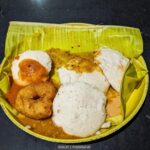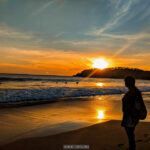
Last village on the Indo-Tibet border: Chitkul, Himachal Pradesh
A 28 km bumpy uphill drive from the town of Sangla in the Kinnaur district of Himachal Pradesh will lead one to Chitkul, the last village on the Indo-Tibet border. Chitkul is situated at a towering altitude of around 11,319 feet above sea-level (3450 m) and is the highest inhabited village in the Sangla Valley.
To reach Chitkul, travellers have multiple options ranging from a local government HRTC bus to hiring a private taxi from Shimla, Rekong Peo or Sangla. Hiring a private taxi is the fastest way to reach, while hopping into the government bus is the most economical way to reach the village of Chitkul. It is advisable to cross-check the bus timings with a few locals, a day or two before your journey begins.

The drive from Sangla to Chitkul is an absolute treat for nature lovers, especially the last 10 km after crossing the nomadic village of Rakcham which marks the halfway point between Sangla and Chitkul. The bumpy road along the valley is extremely beautiful, with the Baspa River dividing the snow-clad Himalayan peaks on the left, the apple orchids and wooden houses made with either Bhog Phattar (slate) or wooden plank roofs on the right. The former locals claim protects the houses from earthquakes and lighting bolts.
Chitkul
At first glance will give you a feeling of time travel, way back into the past. The village has no cell phone coverage, no market, no ATM but a couple of home-run shops selling basic necessities.

The main attraction in Chitkul is the wooden houses and the temple complex in the village. The Goddess of Chitkul is believed to be very powerful and is the only non-Buddhist deity to which respect must be paid by the Parikrama pilgrims. It is believed that the local deity is related to the deity of Gangotri and till date the locals carry the deity to Gangotri on foot over high mountain passes.
Walking is the best way to get around the village, which is more like a small maze with various lanes which all lead to the temple complex of Goddess Mathi which is situated at the centre of the village.

Travellers who are interested in street photography will surely love strolling around the village. While walking around the village, one will surely bump into numerous friendly locals who will greet you with a broad smile and try making some small talk by asking you a few general questions.
The main occupation of the villagers is either animal husbandry or farming. Chitkul produces one of the best variety potatoes in the entire country, nearly all of which are used in producing packaged chips.

Chitkul has two village schools, the primary school is located within the village and the secondary school is situated on the banks of the River Baspa. Considering the extreme remoteness of the place, the village has a very good supply of electricity.
While in Chitkul, travellers can be one with nature by either chilling on the banks of the river Baspa or by hiking into the woods around the village. Before venturing into the woods for a hike it is advisable to take local advice since there is also a possibility of getting lost in the forest area. The Baspa River is a short five minute downhill walk from the village.

Accommodation in the village of Chitkul is limited to a handful of guesthouses which are actually old houses turned into hotels and a couple of homestays in the village which are run by the villagers. The guest houses are not very economical for the budget traveller and most of the travellers prefer staying in either Rakcham or Sangla and doing a day trip to Chitkul.
Eating options in the village are again limited to a handful of dhabas and guest house run restaurants that serve Maggi, rice and dal, chowmein and a few other options. Chitkul also has the last food stall on the Indo-Tibet border named ‘Hindustan ka Aakhiri Dhaba’. Clicking a picture here is a nice memory for many who visit the village.

The best time to visit Chitkul is during the summer months from mid-April to first week of June and from September to the end of October. Thick woolens are recommended while travelling to Chitkul even during the summer months. Also while in Chitkul it is important to carry adequate cash since there is no ATM facility in the village yet (as of April 2016).
Chitkul is very cold and windy during the summer days with the temperature ranging between 5°C to 20°C. The road normally closes around November after the first snowfall with the winter temperature dropping to as low as -20°C and only opens towards the end of March.

The village of Chitkul is surely a must-visit for anyone looking to explore the hidden gems of India. The village does not offer much from the tourist point of view but is a place everyone who considers themselves a traveller will fall in love with.
For a similar experience, >>Click here











